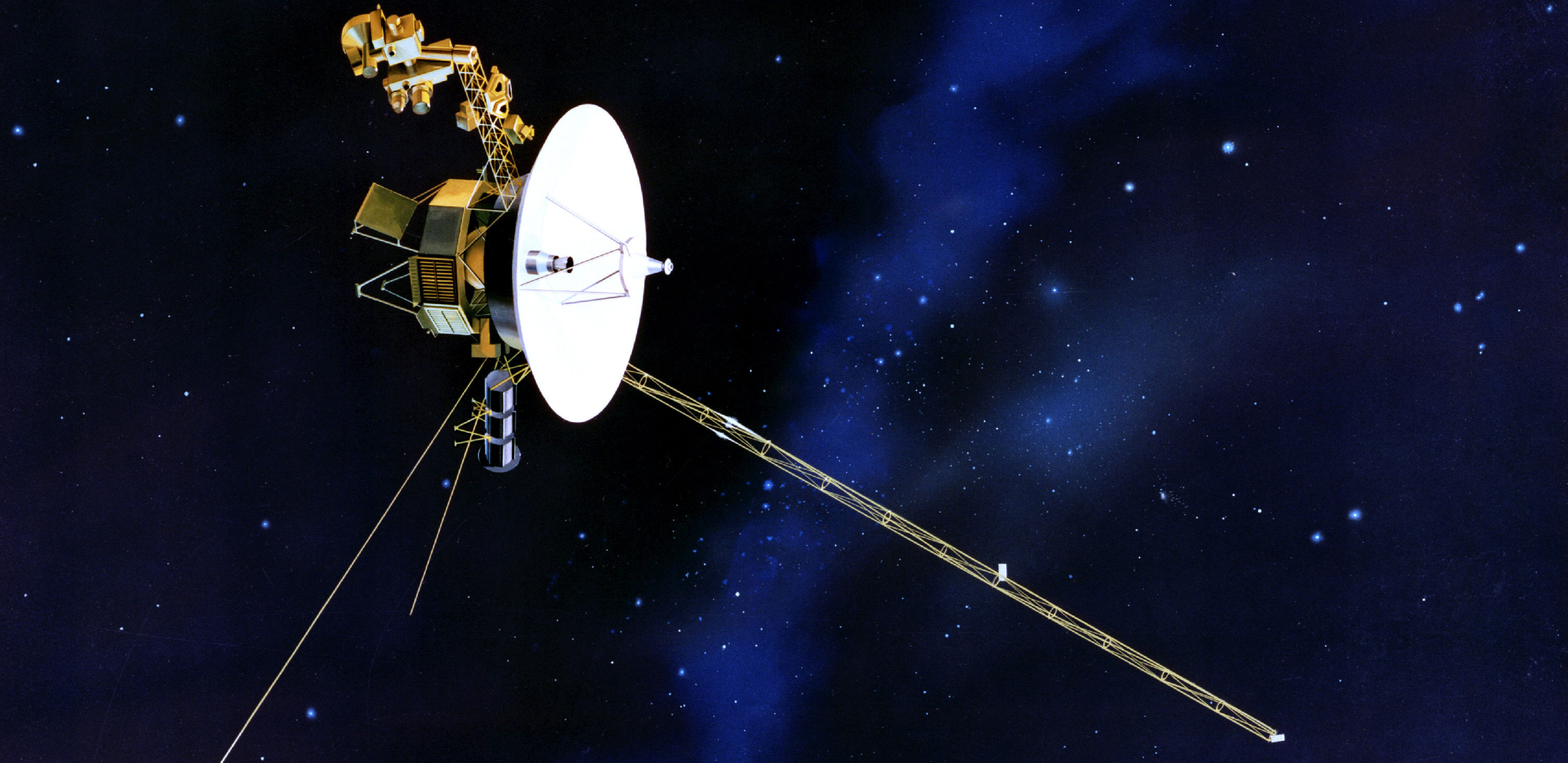
Voyages to the Stars
August 2017 :
Many of us are traveling south and/or westward this month to view a beautiful part of Nature that only we on Earth are able to observe. The total solar eclipse is causing a real exodus from places where the eclipse won't be totally visible, making some of us travel thousands of miles from home. However, in the scheme of things, our voyages from one part of the country to another are virtually infinitesimal compared to several of our workhorse craft, some of which have been away from home for decades. Thanks to a recent notation in Astronomy Magazine, we have a location and apparent destination for our five outward bound machines.
Pioneers 10 and 11, although not being the farthest, were the first to venture outward, through the asteroid belt in an attempt to determine whether it was actually possible to safely send spacecraft to our gas (and ice) giant planets. Launched March 3, 1972 and April 6, 1973, respectively, their goals – should they not be destroyed beforehand – were to take the first up-close and personal images of Jupiter and Saturn. And these in essence, “tin cans” delivered beautifully. They proved the asteroid belt wasn't a stone wall of objects, but a region of mainly empty space, easy for a craft to travel through. Pioneer 10 is about 115 Earth distances (astronomical units) from us, on its way to Taurus's flaming eyeball, Aldebaran, in a couple million years. Pioneer 11, the slowpoke of the two, is only about 96 astronomical units away, and will eventually, four million years from now, be close to Lambda Aquilae, 125 light years from us.
The “jewels” of the outward bound fleet are the Voyagers, 1 and 2. They had to wait to leave us until the Pioneers determined the trip would be safe for them, but, when that reassurance came, the two left for the outer planets. Voyager 2 lifted off first, on August 20, 1977, because its sister craft, Voyager 1, would reach their first goal, Jupiter, first. It left September 5, 1977. After successful missions, to Jupiter and Saturn, with Voyager 2 continuing to Uranus and Neptune, they both are traveling faster than the Pioneers: Voyager 1 is 138 Astronomical units from us, moving toward the star Gliese 445, in Camelopardalis, for rendezvous in 40,000 years, while Voyager 2, moving a tad more slowly, is only 117 Earth distances away, on its way to Ross 248 in Andromeda in 40,000 years.
Finally, we have the newest member of the group, New Horizons, which just two years ago made a quick trip to Pluto, leaving us all open-mouthed in wonder at this incredible tiny world. Although it took almost 10 years to reach its first destination, having launched January 19, 2006, New Horizons is at present just under 38 astronomical distances from us, and is now on its way to another member of this part of our solar system – the Kuiper Belt – KBO 2014 MU69 within the next couple years, after which, it, too, will leave us behind, one of a band of spacecraft going where it appears we humans may never go to, at least in any of our lifetimes.



